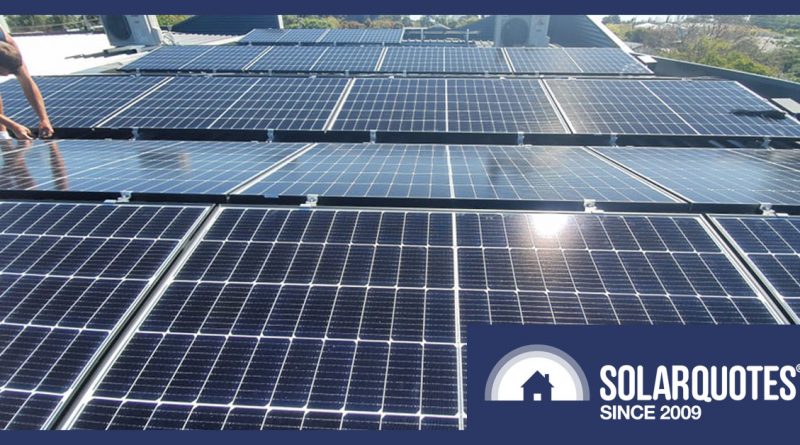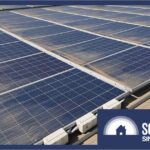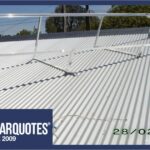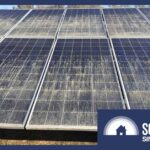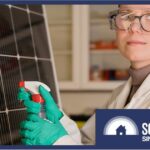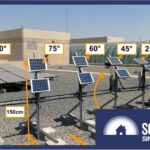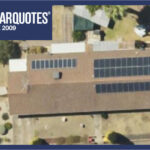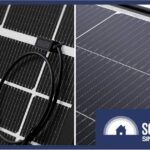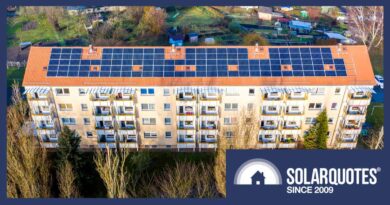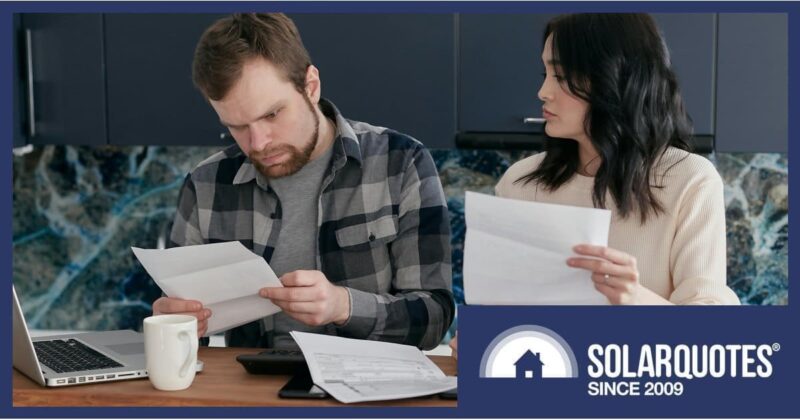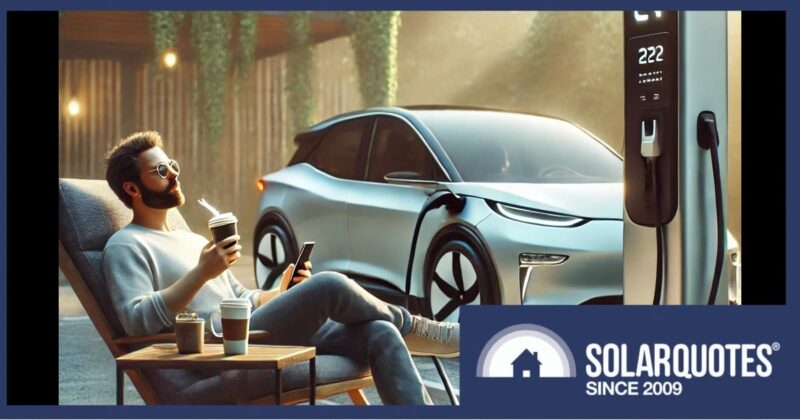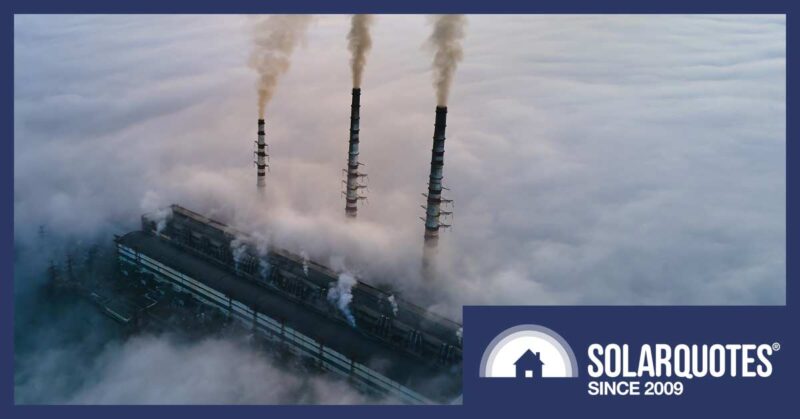Solar Panels On A Flat Roof? Consider East-West Tilts


To maximise the solar energy generated over a year, the perfect roof to install solar panels on in Australia is large, north-facing and at an angle from horizontal that maximises annual energy yield.
Panels mounted parallel to this perfect roof will be optimised for annual energy yield, and in most parts of Australia, should seldom need cleaning. Thanks to their angle, rain will slide off, cleaning as it goes.
Flat roofs are not ideal for solar.
If you mount the panels flat, the biggest problem is not reduced energy yield compared to north-facing panels. The biggest problem is rain pooling on those flat solar panels. They won’t self-clean in the rain, and grime will build up over time. This will compromise your energy yield and potentially slowly eat the seal between the aluminium frame and the glass.
The Clean Energy Council Installation Guidelines state:
“A minimum tilt of 10° is recommended to take advantage of self-cleaning during rain events. Where panels are installed at a tilt angle less than 10°, the customer shall be advised about the need for more frequent cleaning of the modules, and this should be included in the recommended maintenance schedule.”
Some people are happy to live with flat panels and either accept the reduced energy from grime build-up or clean them regularly.
But if you don’t want flat panels on a flat roof, the obvious option is to install them on tilt frames. And the traditional thinking on a residential roof is: if you are going to the effort and expense of tilt frames, you may as well tilt the solar panels at the optimum angle for the location – approximately the latitude.
This logic makes sense in the bygone era of expensive solar panels. You wanted to squeeze as much energy as possible from each panel.
But now solar panels are so cheap, the homeowner’s priority is more often squeezing as much energy as possible from the roof area. That can often lead to a different system design than the traditional approach of maximising yield from each module.
Getting the most energy from a flat roof.
To get the most energy from a flat roof, you need to maximise:
and minimise:
- dirt build-up
- panel shading
- maintenance
The optimum design will depend on many factors unique to your property; including roof shape, shade objects, location in Australia, wind rating and roofing material. But to help you consider your options, I’m going to use an example of a 9m x 6m flat tin roof in Adelaide with no external shading. We will be using 60 cell, 380 W solar panels (1.048m x 1.748m).
Option #1 : 21 flat panels 7.98 kW
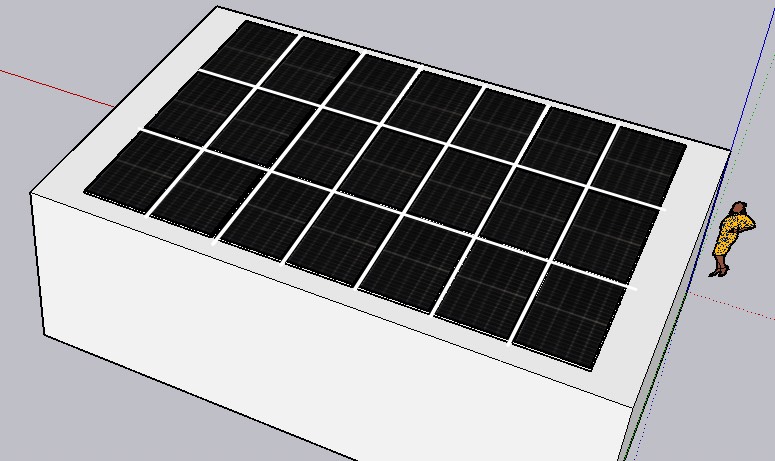

Annual energy yield per roof: 10,998 kWh (assuming regular cleaning).
Annual energy yield per panel: 524 kWh
Pros:
- Cheapest, easiest installation
- Wind resistant
- Least visible from the street1
Cons:
- Panels won’t self-clean in the rain
- Some solar panels are not warranted for flat installation
- Energy yield per module is lower than north-facing
In our example, we can comfortably fit 21 x 380W solar panels, laying them flat.
Option #2 : 15 panels (5.7 kW) tilted north at 30º
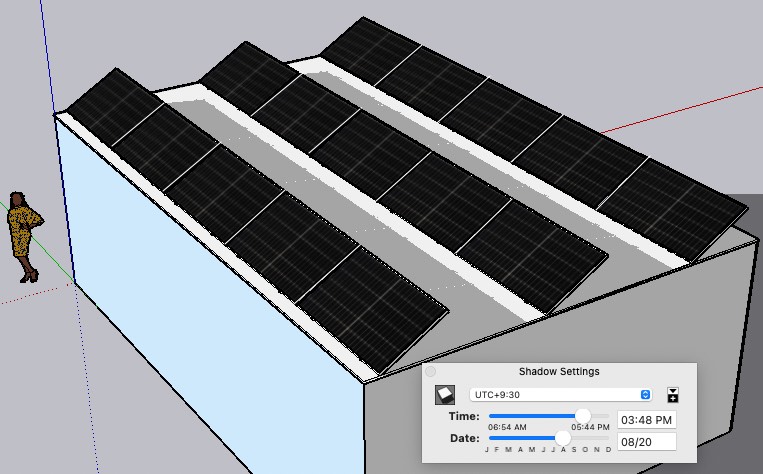

Annual energy yield per roof: 8,487 kWh
Annual energy yield per panel: 566 kWh
Pros:
- most energy per solar panel
- lots of roof access
- will run a little cooler
- will self-clean in rain
Cons:
- can only fit 15 panels to avoid excess shadowing between rows
- rows will still cast some shade on each other at the end of the day – especially in winter
- 30º tilt frames are fiddly to install and add to installation and racking cost per module
- Not a great design for strong winds
Option #3 : 24 panels (9.12 kW) tilted east-west at 10º
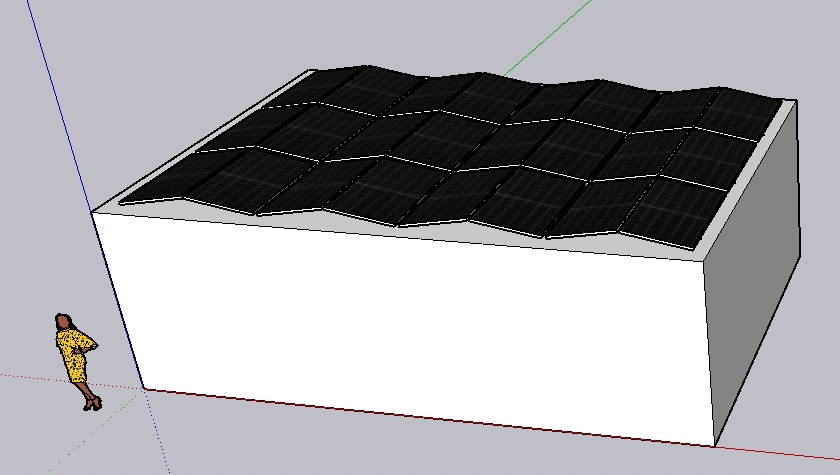

Annual energy yield per roof: 12,592 kWh
Annual energy yield per panel: 525 kWh
Pros:
- can fit the most solar panels (on this particular roof)
- self-cleaning in rain
- intra-row shading is negligible
- a little more energy in mornings and evenings
Cons:
- takes longer to install than flat – but not by much due to innovative racking design – e.g. Clenergy’s ComT racking
- More expensive than flat ($100 – $150 per kW more)
- Not all installers will offer it
For this roof, east-west tilt wins
East-west facing solar panels, in this example:
- generate the most energy overall
- generate the same kWh per panel per year as flat
- remove the need to clean flat solar panels regularly
- remove the problem of pooled water eating the module seals over decades
- give (a little) more energy at the beginning and end of the day
- and, if you ask me, looks killer!
Of course, the relative number of panels that can fit with each design will change depending on the shape, orientation and screw-lines of your roof. A good installer will work out the optimum layout for your roof based on whether:
- You want the maximum energy per solar panel
or
- You want the maximum energy per roof
With the inevitability of homes and cars becoming all-electric, I’d recommend the latter.
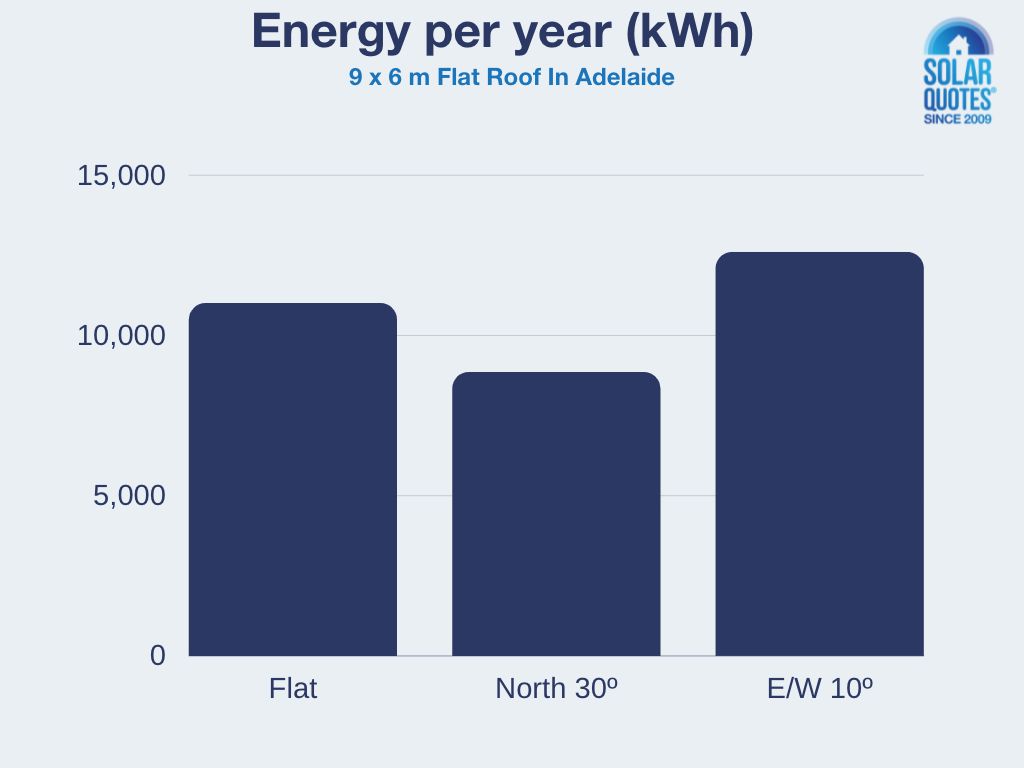

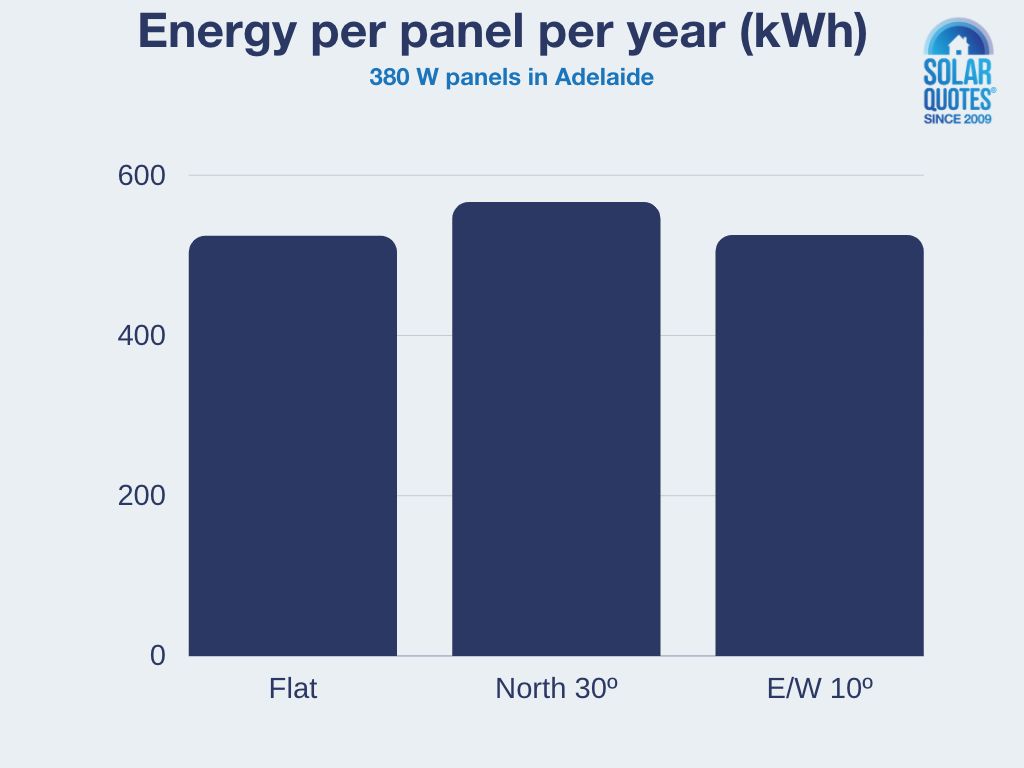

The best racking for east-west tilts on a flat roof
If you want east-west tilts on a flat roof – the racking of choice is currently Clenergy ComT.
The most innovative components in this racking system are the top and bottom legs that mount the solar panels at a fixed 10º:
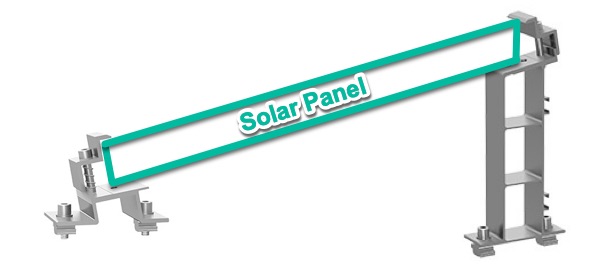

And here’s a video showing the entire installation process:
[embedded content]
Clenergy ComT is sold as commercial racking but works great on residential roofs.
Here are the boys from Solar Wholesalers2 in Adelaide installing East/West Clenergy ComT on a residential roof.
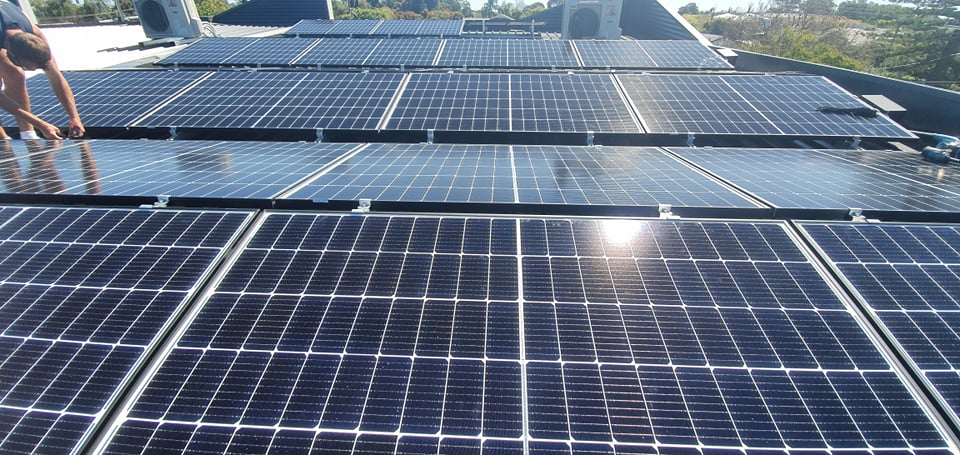

If you have a flat roof – ask your installer about east-west tilts. You’ll potentially get more energy, longer solar panel life and be up for a lot less cleaning.
Footnotes
Original Source: https://www.solarquotes.com.au/blog/solar-flat-roof-east-west-tilts/

